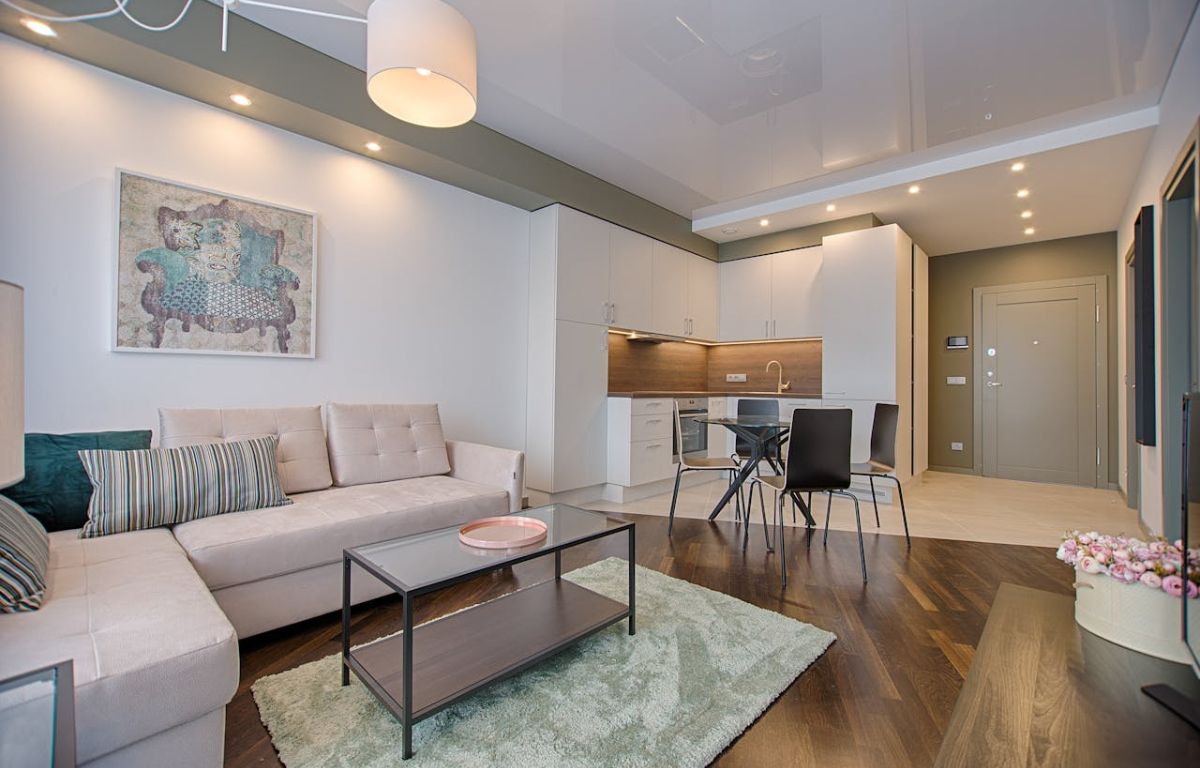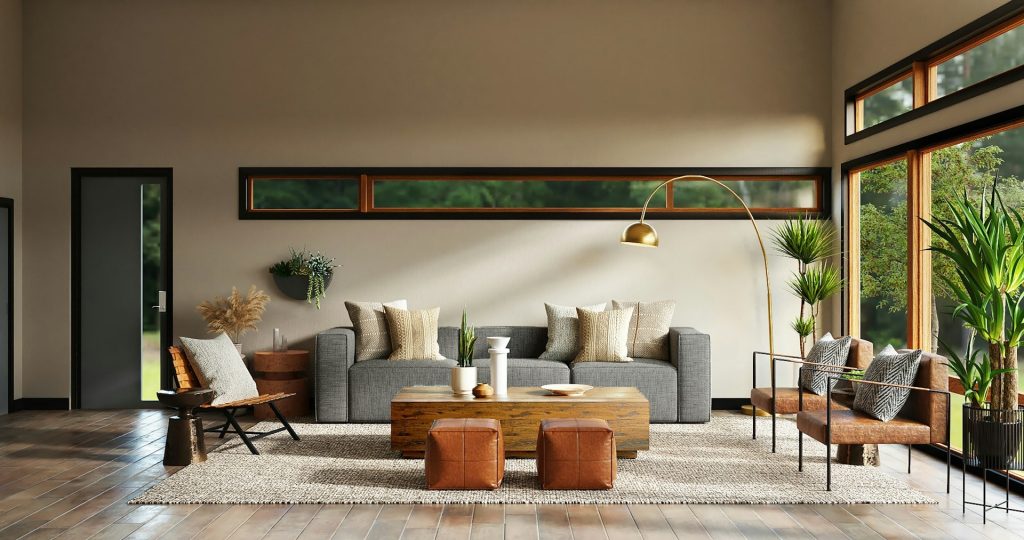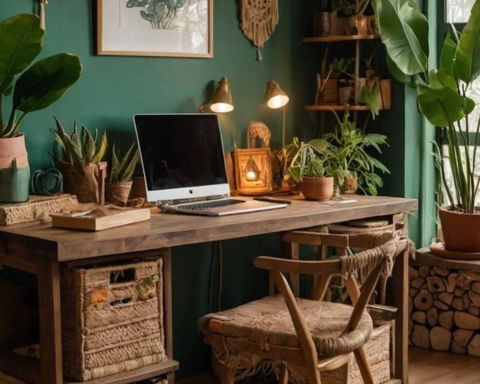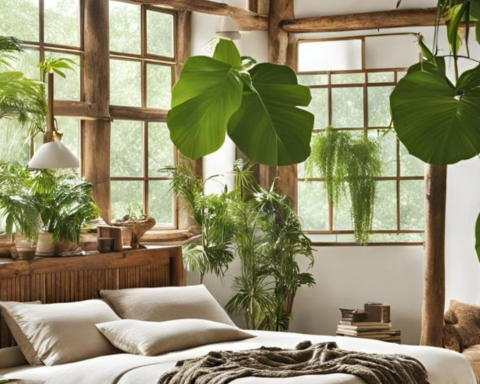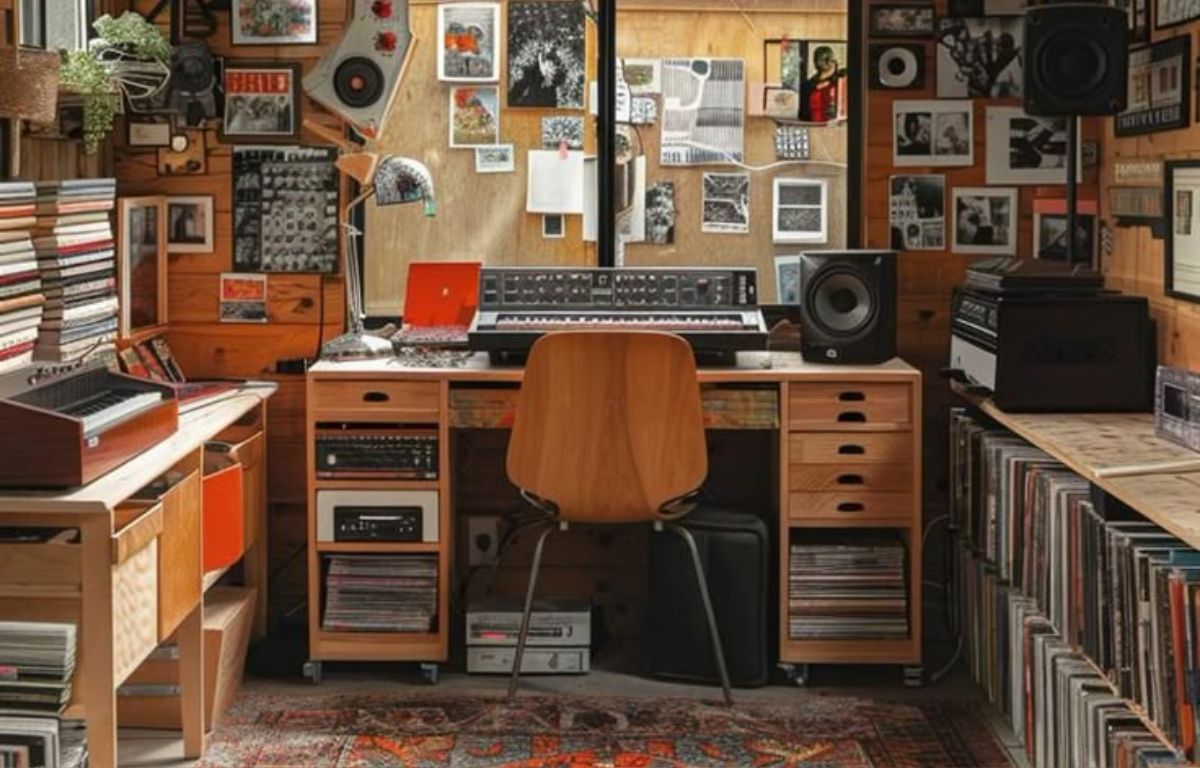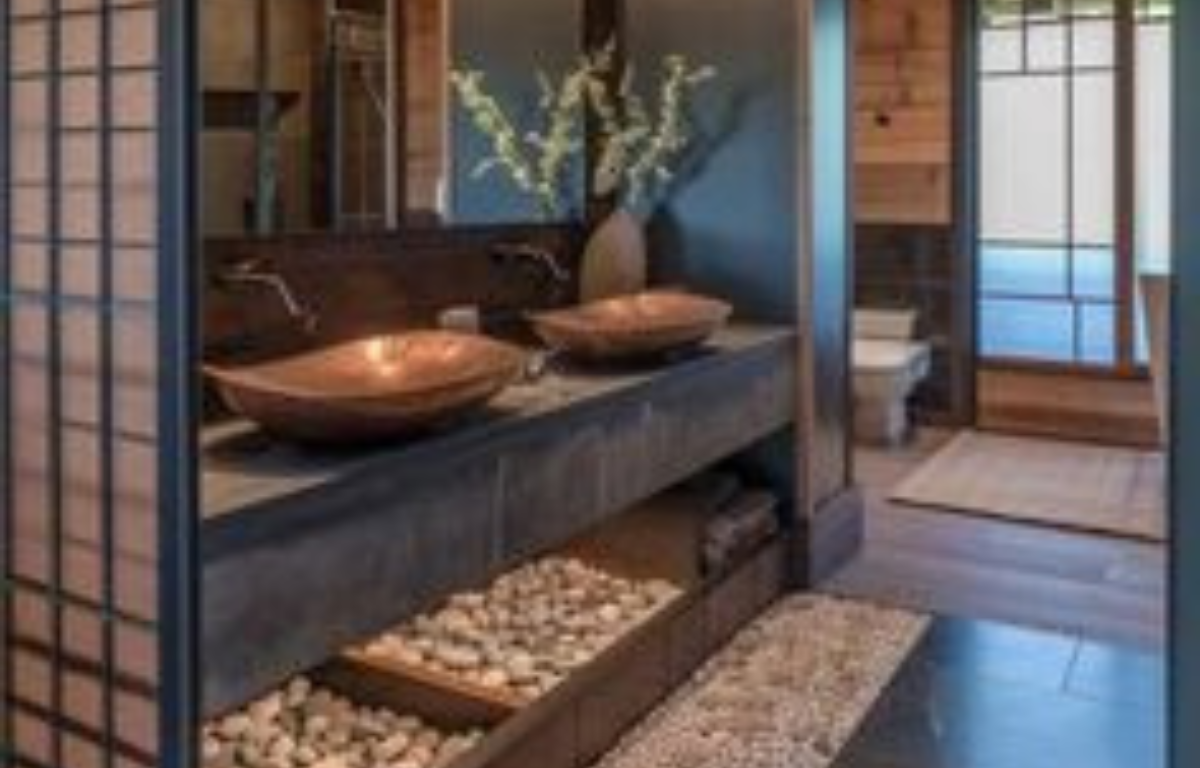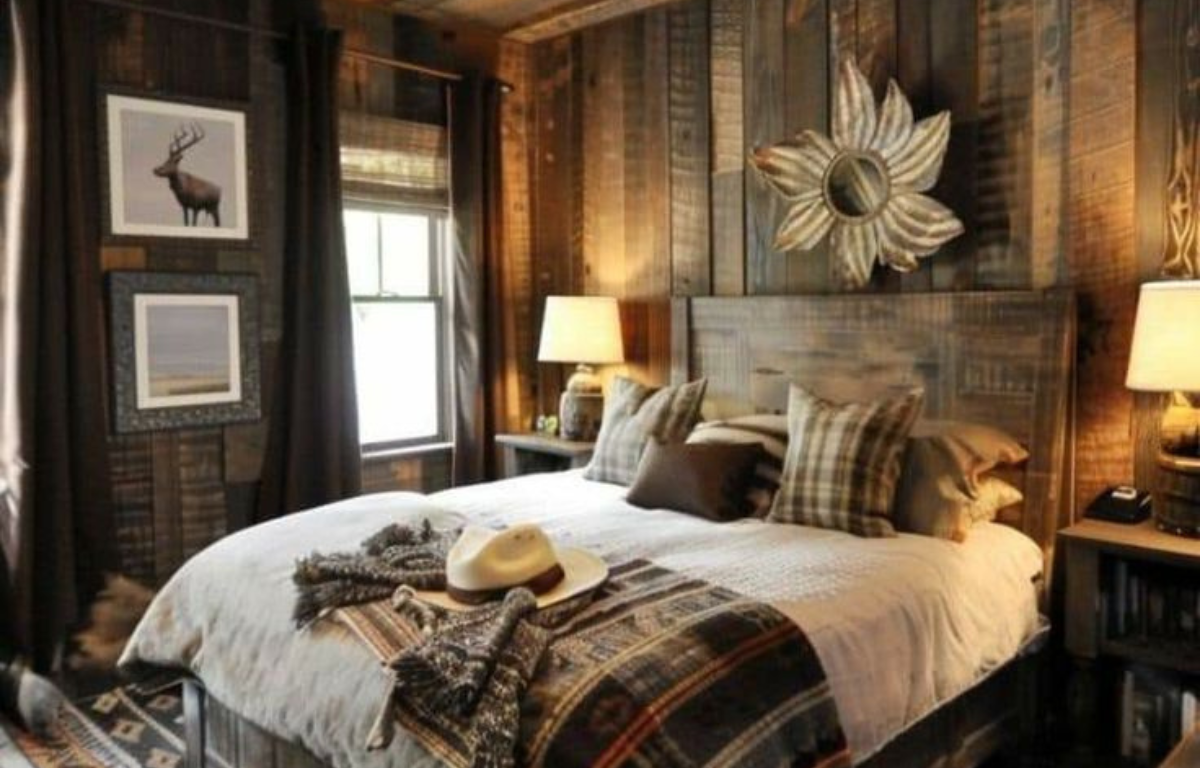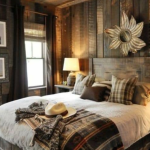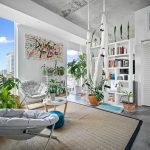Do you ever feel like your small room is closing in on you? You’re not alone. Many homeowners, renters, and apartment dwellers struggle with spaces that feel cramped and cluttered. But here’s the good news—you don’t need to knock down walls or spend a fortune on renovations to make your space feel more open and airy.
With the right interior design techniques, you can create the illusion of a much larger room, making it feel brighter, more spacious, and inviting. From strategic furniture placement to clever color choices and lighting hacks, small changes can have a big impact.
In this article, we’ll explore 10 simple and effective ways to make your small room look bigger—no construction required! Whether you’re decorating a tiny bedroom, a compact living room, or a cozy home office, these tips will help you maximize every inch of space. Let’s dive in!
1- Use Light Colors and Neutral Tones to Visually Expand Your Space
Did you know that the colors you choose for your walls, furniture, and décor can significantly impact how big or small a room feels? Dark colors tend to absorb light, making a space feel enclosed and cramped. On the other hand, light and neutral colors reflect light, creating an open, airy, and more spacious appearance.
Best Paint Colors for Small Rooms:
- Crisp White: The ultimate space-enhancing color that brightens any room.
- Soft Beige: A warm neutral that adds depth without overwhelming the space.
- Light Gray: A modern and sophisticated choice that keeps the room feeling open.
- Pale Pastels: Soft shades like light blue, mint green, and blush pink add a subtle touch of color while maintaining an airy vibe.
To maximize the effect, paint your walls, ceiling, and trim in similar light shades. This creates a seamless, unbroken visual flow that makes the room feel larger. If you love bold or dark colors, use them strategically as accent pieces in furniture, rugs, or décor rather than as the dominant wall color.
By choosing the right color palette, you can instantly transform a small, cramped space into a bright and welcoming retreat!
2- Maximize Natural Light for a Brighter, More Spacious Room
One of the easiest ways to make a small room feel bigger is by optimizing natural light. Sunlight creates a sense of openness, enhances depth, and makes a space feel airy and inviting. The more light you let in, the larger your room will appear.
Best Window Treatments for Small Rooms:
- Sheer Curtains: Lightweight and translucent, they allow sunlight to filter through while maintaining privacy.
- Minimalist Blinds: Opt for blinds that can be pulled up completely to expose the full window.
- Avoid Heavy Drapes: Thick, dark curtains absorb light and make a room feel closed in. Stick to light, airy fabrics instead.
If your room has limited natural light, mimic daylight with warm white LED bulbs. Positioning mirrors opposite windows can also reflect and amplify natural light, giving the illusion of a larger space.
By making the most of natural and artificial lighting, you can brighten up your small room and create a more open, welcoming atmosphere.
3- Choose Multi-Functional Furniture for Maximum Space Efficiency
When decorating a small space, every piece of furniture should serve more than one purpose. Multi-functional furniture is a game-changer for compact living areas, helping you maximize space while maintaining both style and functionality.
Best Multi-Functional Furniture Options:
- Storage Beds with Built-in Drawers: A bed takes up a significant amount of space, so choosing one with integrated storage drawers allows you to keep extra bedding, clothes, or other essentials neatly tucked away.
- Foldable and Expandable Tables: Opt for dining tables or desks that can be folded or expanded as needed. This flexibility ensures that you have enough surface space when required while being able to store it away when not in use.
- Ottomans with Hidden Storage: These versatile pieces can serve as extra seating, footrests, or even coffee tables while providing concealed storage for blankets, books, or other small items.
- Wall-Mounted or Convertible Desks: Perfect for home offices in tight spaces, a fold-out desk mounted on the wall saves room when not in use while offering a functional workspace when needed.
- Sofa Beds or Futons: Ideal for guest accommodations, a sofa that transforms into a bed offers dual functionality without taking up unnecessary space.
Beyond selecting multi-functional furniture, arranging it thoughtfully is essential. Prioritize open walkways to maintain a sense of spaciousness. A cluttered or poorly arranged room can feel smaller than it actually is. Opt for sleek, space-saving designs and consider a minimalistic approach to decor to keep your small space looking airy and inviting.
4- Use Mirrors to Reflect Light and Enhance Space
Mirrors are one of the simplest yet most effective ways to make a room feel larger and more open. By reflecting both natural and artificial light, they create the illusion of depth and brightness, making even the smallest spaces feel more expansive. Strategically placing mirrors in your home can instantly enhance its aesthetics while improving functionality.
Best Mirror Placements for a Spacious Look
- Across from a Window to Reflect Natural Light: Positioning a mirror directly across from a window allows it to capture and bounce sunlight throughout the room. This not only brightens the space but also creates the illusion of an extra window, making the area feel more open.
- Large Wall Mirrors to Add Depth: Oversized mirrors or full-length wall mirrors can visually double the size of a room by creating a sense of continuity. They are especially effective in small living rooms, entryways, and bedrooms where space is limited.
- Mirrored Furniture for an Elegant Touch: Incorporating mirrored furniture, such as coffee tables, dressers, or cabinets, can subtly reflect light while adding a touch of sophistication to your décor. These pieces serve as both functional and decorative elements that contribute to a more airy feel.
- Gallery Wall of Small Mirrors: Instead of a single large mirror, consider arranging multiple smaller mirrors in a stylish pattern. This can serve as an eye-catching focal point while enhancing the room’s sense of depth and brightness.
- Mirrored Backsplashes in Kitchens or Bathrooms: A mirrored backsplash in a kitchen or bathroom can amplify light and create a sleek, modern aesthetic. It’s a practical way to enhance a small space without overwhelming it.
To get the best results, choose mirrors with slim or minimalistic frames to keep the focus on the reflection rather than the border. Additionally, pairing mirrors with light-colored walls and strategic lighting can further enhance the spacious effect.
5- Declutter and Organize for a More Spacious Feel
A cluttered space can instantly make a room feel cramped and overwhelming. By reducing excess items and implementing smart organization strategies, you can create an open, airy environment that feels significantly larger. The key is to maximize storage while maintaining a clean and minimalist aesthetic.
Smart Storage Solutions to Keep Clutter Away
- Under-Bed Storage Boxes: Utilize the often-wasted space under your bed by storing seasonal clothing, shoes, or extra bedding in slide-out bins or vacuum-sealed bags. This keeps essentials accessible without taking up visible space.
- Hanging Organizers on Doors: Over-the-door organizers are perfect for storing shoes, accessories, cleaning supplies, or toiletries. They take advantage of vertical space while keeping everyday items neatly arranged.
- Floating Shelves to Keep Surfaces Clear: Wall-mounted shelves provide additional storage without occupying floor space. Use them to display decorative items, books, or storage baskets, keeping countertops and tables clutter-free.
- Multipurpose Storage Ottomans and Benches: Choose furniture that doubles as storage to keep your space functional and tidy. Ottomans, benches, and coffee tables with hidden compartments allow you to store miscellaneous items while maintaining a sleek look.
- Drawer Dividers and Stackable Bins: Inside drawers and cabinets, use dividers and stackable containers to keep small items organized. This prevents clutter from accumulating in hidden spaces.
Beyond just organizing, adopting a minimalist approach can transform your living space. Keep only what you truly need and love, and regularly declutter by donating or discarding items that no longer serve a purpose. A clean, well-organized home not only looks bigger but also promotes a sense of calm and relaxation.
6- Raise Your Curtains Higher to Create the Illusion of Taller Walls
One of the easiest and most effective design tricks for making a small room feel larger is adjusting the height of your curtains. Hanging curtains closer to the ceiling draws the eye upward, creating the illusion of taller walls and a more expansive space. This simple yet impactful technique can dramatically enhance the proportions of any room.
Best Curtain Tips for Small Rooms
- Install Curtain Rods Higher Than the Window Frame: Instead of mounting your curtain rod directly above the window, place it a few inches—or even a foot—closer to the ceiling. This creates a visual effect that makes your walls appear taller.
- Choose Floor-Length Curtains: Long, flowing curtains that reach the floor add a sense of elegance and elongation. Avoid short or mid-length curtains, as they can make the space feel smaller and less refined.
- Stick to Solid or Lightly Textured Fabrics: Light-colored, sheer, or monochromatic curtains allow natural light to pass through while maintaining an airy aesthetic. Avoid heavy patterns or dark colors, which can visually shrink the room.
- Opt for Curtain Panels That Extend Beyond the Window: Extending the curtain rod a few inches beyond the window frame on each side allows more natural light to enter when the curtains are open, making the room feel brighter and wider.
- Use Lightweight or Sheer Materials for an Airy Look: Fabrics like linen, cotton, or sheer panels help maintain a sense of openness, preventing the room from feeling weighed down by heavy drapery.
By making this small but strategic adjustment to your curtains, you can instantly enhance the room’s proportions, making it feel taller, brighter, and more spacious. This cost-effective trick works in any room, from bedrooms to living spaces, and pairs well with other space-enhancing techniques like mirrors and minimalistic decor.
7- Use Vertical Space to Maximize Storage and Openness
When working with a small space, one of the best ways to create a more open and organized environment is to take advantage of vertical storage. Instead of cluttering the floor with furniture and storage units, utilize your walls to keep items neatly arranged while freeing up valuable walking space. This approach not only enhances functionality but also makes a room feel taller and more expansive.
Smart Ideas for Vertical Storage
- Floating Shelves for Books and Decor: Wall-mounted shelves provide stylish storage for books, plants, and decorative pieces without taking up floor space. Arrange them strategically to create a visually appealing display while keeping surfaces clear.
- Tall Bookshelves Instead of Wide Ones: Opt for bookshelves that extend upward rather than outward. Taller units make use of vertical space efficiently and draw the eye upward, making ceilings appear higher.
- Wall-Mounted Desks to Free Up Floor Space: A fold-down or floating desk is perfect for small home offices, allowing you to have a functional workspace without occupying unnecessary square footage. When not in use, some models can be folded up against the wall for even more space-saving benefits.
- Hanging Hooks and Pegboards for Organization: In kitchens, entryways, or home offices, wall hooks or pegboards can hold everything from cooking utensils to bags and accessories, keeping essentials within easy reach while preventing countertop clutter.
- Overhead Storage in Closets and Kitchens: Use high-mounted shelves or cabinets to store items you don’t need daily, such as seasonal decor, extra linens, or kitchenware.
By keeping storage solutions off the floor and utilizing walls effectively, you instantly create a cleaner, more open environment. This method works exceptionally well in small apartments, tiny bedrooms, and compact living areas, ensuring that every inch of space is used efficiently.
8- Pick the Right Flooring to Make Your Space Look Bigger
The type of flooring you choose plays a crucial role in how spacious your room feels. The right flooring can create the illusion of a larger, more open space, while the wrong choice can make a room appear smaller and more confined. By selecting the right colors, patterns, and materials, you can enhance the overall flow of your home and maximize its visual appeal.
Best Flooring Options for Small Rooms
- Light Wood or Whitewashed Flooring: Lighter tones, such as white oak, ash, or bleached wood, reflect more light, making a room feel airy and expansive. Dark flooring can absorb light, which may make the space appear smaller.
- Large Tiles Instead of Small Ones: Bigger tiles with minimal grout lines create a sense of continuity, reducing visual clutter and making the floor seem more expansive. Large-format tiles work especially well in bathrooms, kitchens, and open-plan living spaces.
- Diagonal or Vertical Patterns to Elongate the Room: Laying flooring in a diagonal or vertical direction can draw the eye outward, giving the impression of added length or width. This technique works well with hardwood planks, tiles, and even vinyl flooring.
- Seamless Flooring Throughout the Home: Using the same type of flooring across multiple rooms creates a smooth, uninterrupted flow, preventing spaces from feeling chopped up or segmented. This is particularly effective in open-concept layouts where consistency enhances the feeling of spaciousness.
To further enhance the spacious effect, consider using glossy or slightly reflective finishes that bounce light around the room. If you prefer rugs, choose those in neutral tones or with simple patterns to avoid overwhelming the space.
9- Keep Furniture Off the Floor to Create an Open, Airy Look
One of the simplest yet most effective ways to make a small room feel bigger is to choose furniture with visible legs rather than solid, bulky bases. Raised furniture creates the illusion of more floor space, allowing light to pass through and tricking the eye into perceiving a larger area. By keeping furniture elevated, you can enhance the sense of openness and make your space feel more breathable and uncluttered.
Best Furniture Choices for a Spacious Look
- Sofas and Chairs with Legs Instead of Solid Bases: Opt for seating with exposed legs rather than blocky, heavy-bottomed designs. This small design choice allows more light to circulate underneath, creating a sense of depth and spaciousness.
- Floating Vanities and Wall-Mounted Cabinets: In bathrooms and kitchens, floating vanities and cabinets keep storage functional while leaving the floor visible. This modern, space-saving approach makes the room feel less confined.
- Glass or Acrylic Tables to Reduce Visual Clutter: Transparent furniture, such as glass coffee tables or acrylic side tables, provides functionality without visually weighing down the space. Since they don’t obstruct sightlines, they help maintain an open, airy feel.
- Bed Frames with Clearance Underneath: Choosing a bed frame with legs instead of a low-profile or platform design creates an illusion of extra space, especially in small bedrooms. This also allows for additional under-bed storage if needed.
The more floor space you can see, the larger your room will appear. Pair raised furniture with light colors, mirrors, and vertical storage to maximize the effect. Keeping the area underneath furniture clean and uncluttered further enhances the open look.
10- Limit Patterns and Busy Designs for a Clean, Spacious Look
Patterns can add character and style to a room, but when overused in a small space, they can create visual clutter and make the area feel cramped. To maintain an open and airy look, it’s essential to strike a balance between incorporating patterns and keeping the design cohesive. By using patterns strategically, you can enhance your space without overwhelming it.
Best Pattern Choices for Small Rooms
- Subtle Stripes to Elongate Walls: Vertical stripes can make ceilings appear higher, while horizontal stripes can give the illusion of a wider room. Stick to soft, neutral tones for a sophisticated look.
- Small-Scale Prints Instead of Oversized Designs: Large, bold patterns can dominate a small space, making it feel visually heavy. Opt for delicate prints, such as tiny florals, polka dots, or geometric shapes, to add interest without overpowering the room.
- Stick to a Cohesive Color Palette: Keeping patterns within a limited color scheme helps maintain harmony. Soft, neutral hues or monochromatic designs can create a sense of flow and openness.
- Use Bold Patterns in Moderation: If you love bold prints, incorporate them thoughtfully. A single accent wall with patterned wallpaper, a statement rug, or patterned throw pillows can add personality without making the room feel cluttered.
To further enhance a small space, pair subtle patterns with solid colors, light-reflecting materials, and minimalistic furniture. Avoid mixing too many different patterns in one room, as this can create a chaotic feel. By keeping designs simple and intentional, you can achieve a well-balanced, stylish space that still feels open and inviting.
Conclusion: Transform Your Small Space into a Spacious Retreat
A small room doesn’t have to feel cramped! With the right design strategies—such as using light colors, space-saving furniture, and strategic décor—you can make any space feel significantly larger and more inviting. The key is to keep your layout open, your furnishings streamlined, and your color palette bright to maximize light and create the illusion of extra space.
By incorporating these simple yet effective design tips, you can transform your home into a cozy, stylish, and spacious retreat without sacrificing comfort or functionality. Whether it’s through smart storage, clever furniture choices, or strategic lighting, a well-planned approach can make all the difference in enhancing your living space.
FAQs: Making the Most of a Small Room
1. What color makes a small room look the biggest?
Light colors such as white, beige, soft gray, and pastels help reflect light, making a room feel brighter and more spacious. Neutral tones create a sense of openness, while cool shades like pale blues and greens add a refreshing, airy feel.
2. Does wallpaper make a room look smaller or bigger?
It depends on the design! Light-colored wallpaper with subtle patterns can enhance the feeling of spaciousness, while dark or overly busy patterns can make a room feel more enclosed. Vertical stripes can elongate walls, making ceilings appear higher.
3. What type of furniture is best for small spaces?
Furniture that is multi-functional, has visible legs, or is made of transparent materials (such as glass or acrylic) works best in small rooms. Floating shelves, wall-mounted desks, and nesting tables also help maximize space without cluttering the floor.
4. How can lighting affect the perception of room size?
A well-lit space naturally feels larger. Maximizing natural light, using bright white or warm LED bulbs, and incorporating mirrors to reflect light can all enhance the feeling of openness in a small room. Layered lighting—such as a combination of ceiling lights, floor lamps, and wall sconces—also prevents shadows and dark corners that make spaces feel smaller.
5. Can a rug make a room look bigger?
Yes! A large, light-colored rug with minimal patterns can create the illusion of a more expansive floor area. Placing the rug under key furniture pieces, such as a sofa and coffee table, helps anchor the space while making it feel more cohesive and open.
